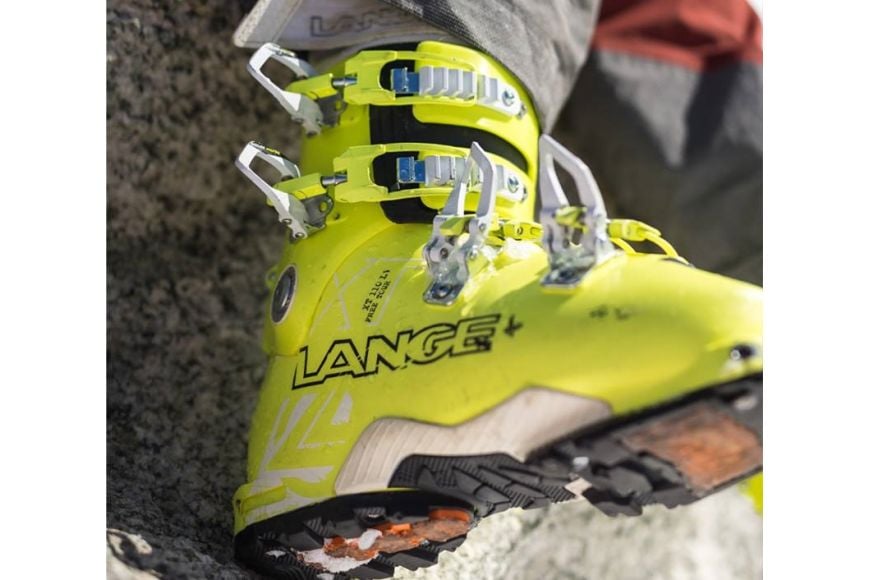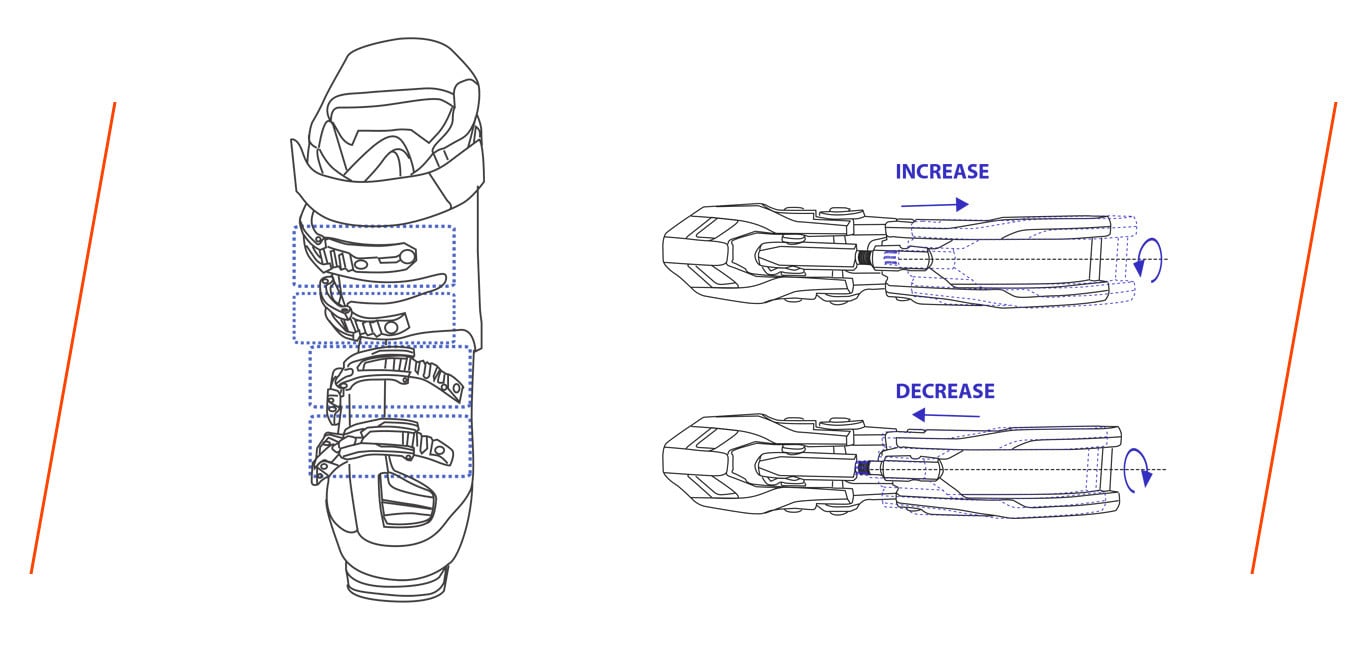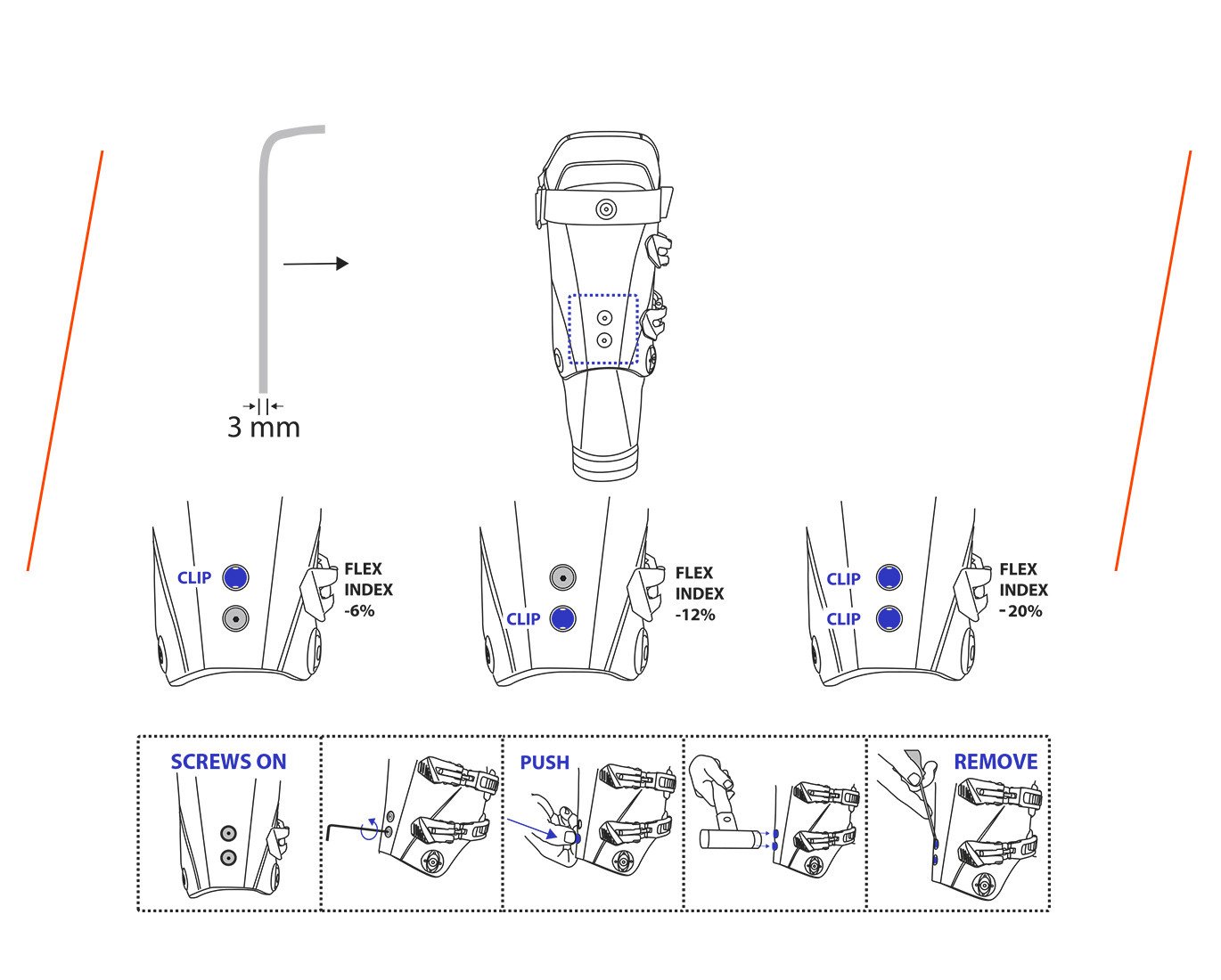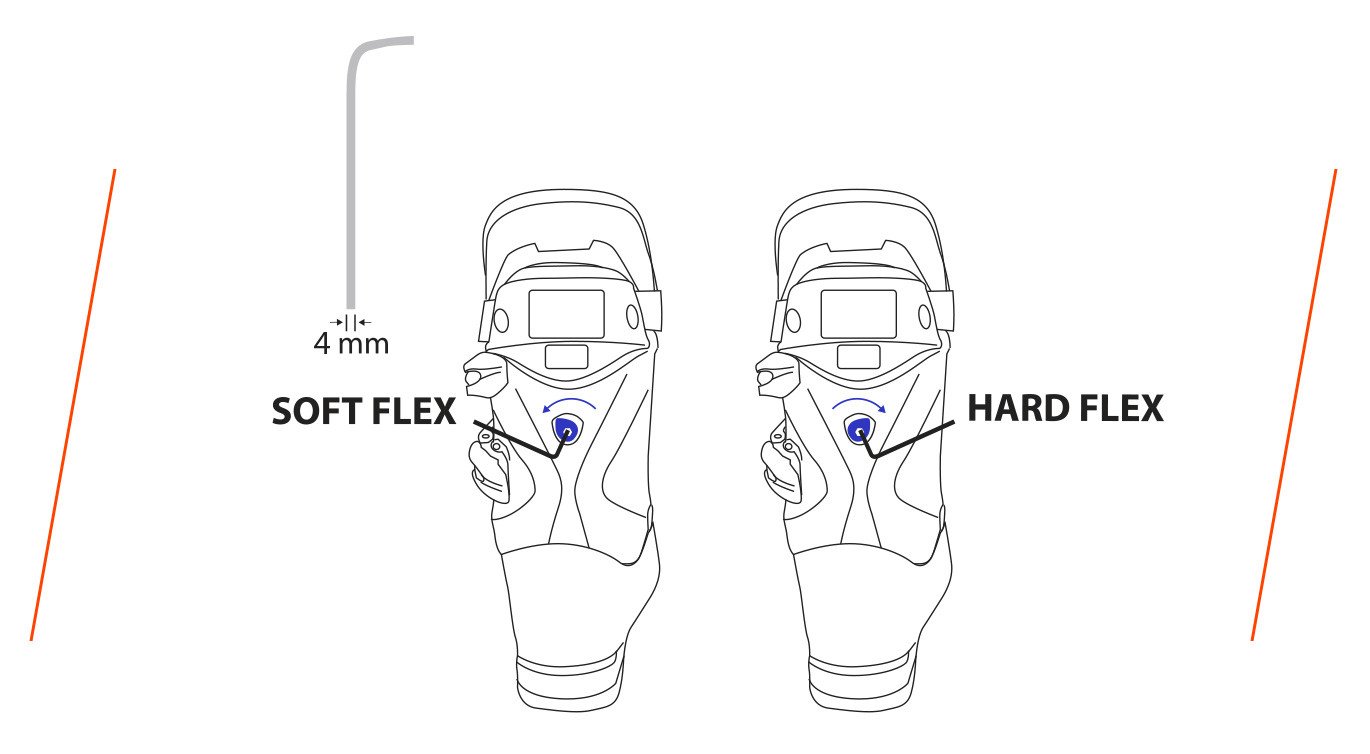

HOW DO I ADJUST MY FOOT SUPPORT AND THE FLEXIBILITY AND FLEX OF MY LANGE SKI BOOTS?
We will see in a first part how to adjust the foot support and flexibility in the Lange ski boots.
STEP 1.
Put on your shoes, close the hooks and tighten the straps; make sure the hooks are not too tight.
STEP 2.
Make your first run of the day at a moderate speed.
STEP 3.
- If the hold is too loose, tighten the hooks corresponding to the areas where you need a better hold.
- If your shoe is too soft, tighten either the hooks on the collar (top of the shoe), or the Velcro straps, or both.
- If the fit is too stiff, you can slightly loosen either the Velcro straps, the collar hooks, or both to get a softer flex.
For a more precise fit of your foot in the shoe, you can adjust the length of the hook by manually screwing or unscrewing the hook.

Now we will see how to adjust the flex of the Lange ski boots.
The flex index of Lange shoes indicates their stiffness: the higher the index, the stiffer and more reactive the shell; the lower the index, the softer and more forgiving the shell.
There are three levels of flex:
For men:
- Flex from 60 to 70: For intermediate skiers looking for comfort in their ski boots.
- The flex ranging from 80 to 110: It is for sports skiers (intermediate to advanced) who need precision when leaning on skis.
- Flex from 120 to 150: It mainly concerns competitors or expert skiers who need a high inclination related to a high rigidity.
For women :
- Flex from 50 to 70: It concerns intermediate skiers who are looking for comfort in their ski boots.
- Flex from 80 to 90: It is for sporty skiers (intermediate to advanced) who need precision when leaning on the skis.
- Flex from 100 to 110: It is mainly for expert skiers who need a high inclination and high rigidity.
NB: It is important to be aware of one's true level in skiing because a flex that is too rigid for an intermediate skier can become a limiting factor in his progression. For a heavy, powerful skier, the flex must be increased to prevent the boot from deforming.
Finally, the choice of flex should be correlated with the type of practice: the flex of a Lange All Mountain Free boot is less important than that of a Lange Race or All Mountain Piste boot.
METHOD 1: YOUR BOOTS HAVE TWO ADJUSTMENT RIVETS ON THE BACK.
- To reduce your flex by 6%, unscrew the top rivet with a 3mm Allen key, and plug the hole with a clip (supplied with the shoe). Simply push the clip into the hole, and tap it with a hammer.
- To reduce your flex by 12%, unscrew the bottom rivet with a 3mm allen key, and seal the hole with a clip (supplied with the shoe). Simply push the clip into the hole and tap it with a hammer.
- To reduce your flex by 20%, unscrew the two rivets with a 3mm Allen key, and plug the holes with clips (supplied with the shoe). Simply push the clips into the holes, and tap them with a hammer.

METHOD 2: YOUR SHOES HAVE A SINGLE FLEX RIVET
Using a 4mm Allen key, turn the rivet to the left to reduce the flex of your Lange shoe, or to the right to increase it.



Leave a Reply
All fields are required